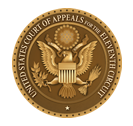
After a few months of quiet, I’m happy to say that the Copyright & Scholarly Communication team at Duke is bringing this blog back to life. Since Kevin Smith left to become Dean of Libraries at the University of Kansas, I have stepped in to take over his old post as Director of the Office of Copyright and Scholarly Communications at Duke. If you’re interested in who I am and what I do, you can check out my new Scholars@Duke profile. I plan to use this blog to cover the same types of issues that Kevin did, especially copyright and publishing, as well as to highlight some of the interesting projects happening here at Duke on those same subjects.
I think it’s only appropriate that my first post is about the Georgia State University e-reserves copyright lawsuit. This blog has more or less chronicled this suit since it was filed in 2008. For anyone unfamiliar, the case is about whether it is fair use for GSU professors to make electronic excerpts of books available to students in their courses. The plaintiffs Cambridge University Press, Oxford University Press and Sage argue that in most cases it is not fair use. So far, the courts have mostly decided in favor of GSU regarding the specific uses made by GSU and its faculty.
Publishers’ Brief on Appeal

On Friday the Publishers filed their opening brief on appeal (their second appeal!) before the 11th Circuit Court of Appeals. The brief isn’t a huge development. But, it makes some fascinating, and concerning, fair use arguments that are worth discussing. On fair use the brief basically argues:
- The lower court didn’t balance the fair use factors correctly. It argues that the court placed too little weight on the fourth fair use factor (whether GSU’s uses harmed the market for the works).
- That the lower court made it too hard for Publishers to show that their markets were in fact harmed.
Market harm is critical for the Publishers because they don’t have much else left to argue about. Based on what the appellate court said on the last appeal, the first factor (educational in-class use) strongly favors GSU; the second factor (nature of the work) tends to favor GSU in many cases, though the appellate court said this factor doesn’t count for much, and the third factor (the amount and substantiality used) also tends to favor GSU in most instances
Balancing the Fair Use Factors
The Publishers make some good introductory points about how courts should weigh the fair use factors. The brief recites case law saying that the factors should be balanced together, that there are “no hard evidentiary presumptions” as to what types of uses may be fair, and that the district court should not take a “rigid” or “mathematical” approach to fair use (something that the district court was chided for the first time around on appeal). So far, so good.
But then comes their core argument about market harm and fair use balancing, which I think fails. It starts by asserting that the lower court was too mechanical in its approach. The brief seizes on a statement made by the lower court, that it “estimates that the initial, approximate respective weights for the four factors as follows: 25% for factor one, 5% for factor two, 30% for factor three, and 40% for market harm.” (Dist. Ct. Op. at 14).
I agree that assessing the numerical percent value of each factor is somewhat unusual. What’s really strange, though, is that you would think that the Publishers would be happy with a mechanical approach under which market harm is weighed as 40% of the analysis—in other words, almost outcome determinative.
Market Harm Above all Else?
Apparently almost outcome determinative isn’t good enough. In a section of the brief that contrasts starkly with those opening (and mostly accurate) statements of the law about balancing the factors together, Publishers argue that no use can be fair use if there is any market harm:
“This (literally) calculated choice of numerical weights . . . produced findings of fair use even where the court found market harm under factor four that weighed against fair use. Indeed, the court made clear its resistance to granting dispositive significance to factor four by stating that while factor four would be given “additional weight,” factor three was “critical” because it was “at the vortex of the holistic evaluation required by the Court of Appeals’ Opinion.”
Like some of the other positions the Publishers have raised in this case, this approach might make sense 30 years ago. In 1985, the Supreme Court announced that the market harm factor is “undoubtedly the single most important element of fair use.” But, the Supreme Court has since walked back this approach. It stated clearly in 1994 in Campbell v. Acuff-Rose that “all [factors] are to be explored, and the results weighed together, in light of the purposes of copyright.”
In the first GSU appeal, the 11th Circuit recognized that Campbell is controlling: “This language [from Campbell] appears to be inconsistent with any single factor being deemed the single most important.” The 11th Circuit reasoned, however, that in this case because “the threat of market substitution is severe, it is appropriate in this instance to afford relatively great weight to the fourth factor in the overall fair use analysis.” In fact, the lower court obeyed that direction. It gave market harm 40% weigh in each determination, more than any other factor. It just declined to make market harm outcome determinative, (worth 51% or more, in other words) which is what the Publishers wish for.
Takeaways for Educational Users
The weight given to market harm—even the difference between 40% and 51%, if you want to try to attach a percent value on it—is critically important for educational users. We now live in a world where books never go out of print (print-on-demand). License services are proliferating, and one can buy permission to do an increasingly broad array of activities, such as text or data mining. If courts accept that even the tiniest lost licensing revenue in those markets constitutes a “harm” that is judged to be determinative in the overall fair use analysis, then the rights of educators to use copyrighted works is diminished significantly. We’ll have to wait and see what the 11th Circuit does, but I hope it sees through this argument and upholds the decision of the lower court.


You may need to update something in the settings. The message came as coming from Kevin Smith @ Duke.
Thanks! Apparently we have some kinks to still work out, but I think this is fixed now.
Thank you Dave! I’m really glad to see you picking up doing a great job covering this.
Great to have Scholarly Communications back! Thank you Dave.
“If courts accept that even the tiniest lost licensing revenue in those markets constitutes a “harm” that is judged to be determinative in the overall fair use analysis, then the rights of educators to use copyrighted works is diminished significantly.”
Every time I license something from the CCC my soul dies a little.